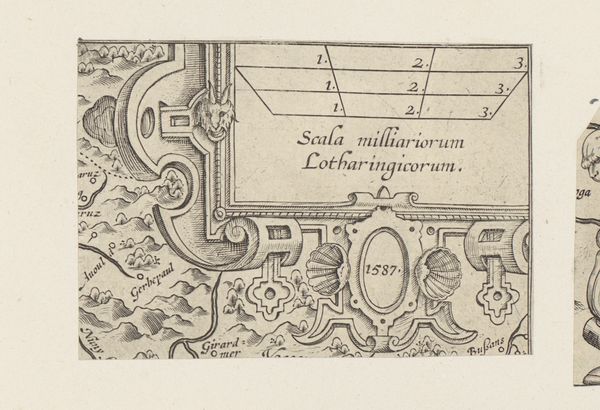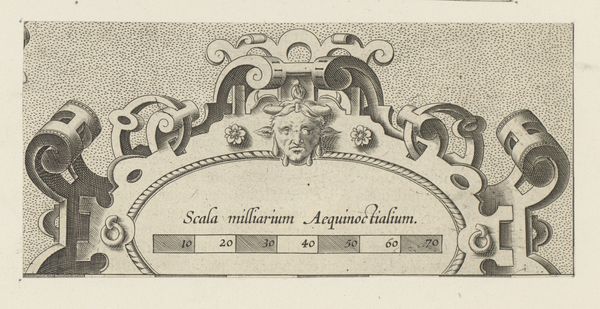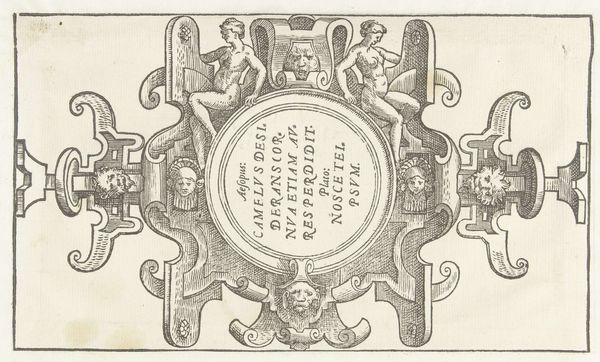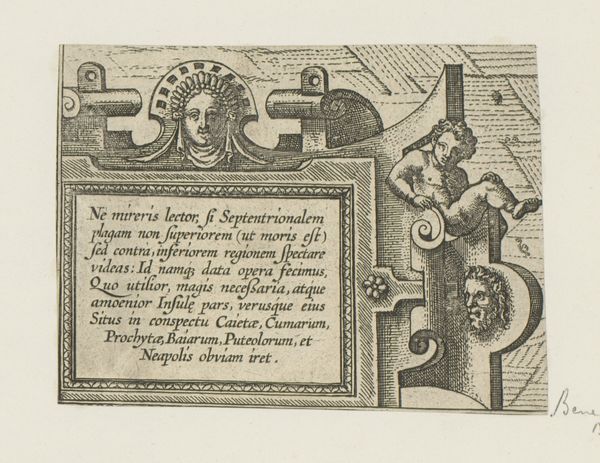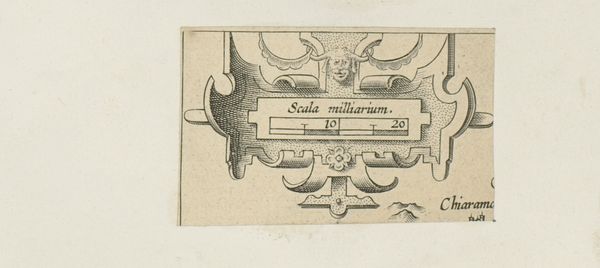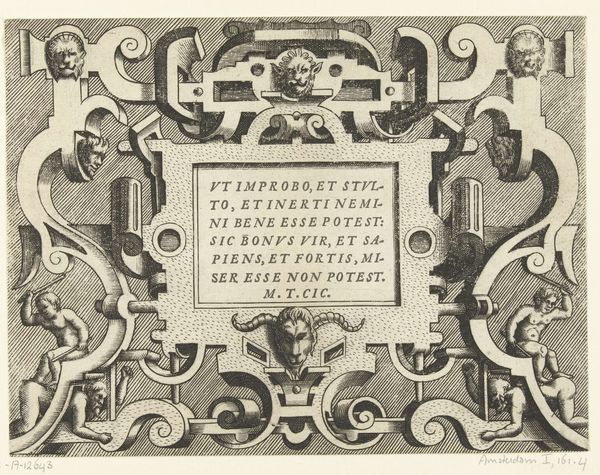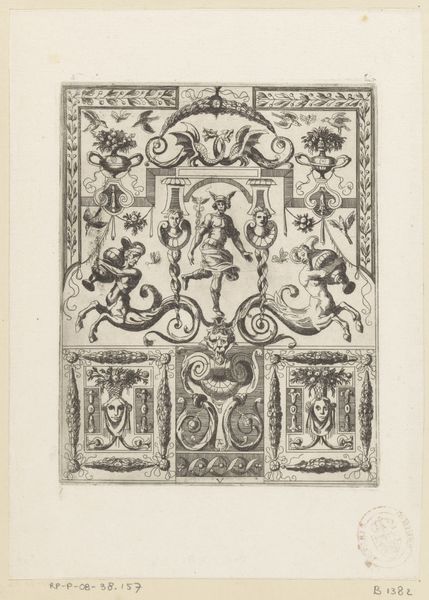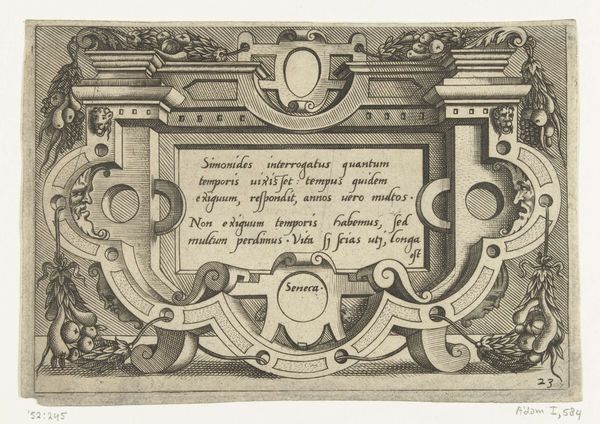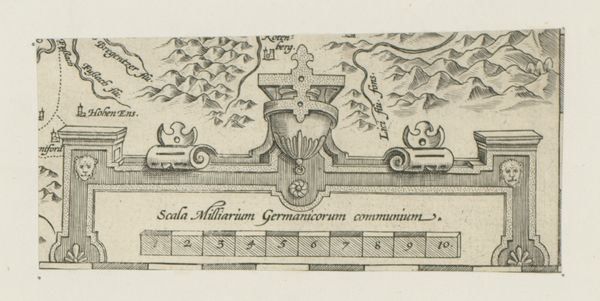
print, engraving
# print
#
pen sketch
#
old engraving style
#
form
#
11_renaissance
#
geometric
#
pen-ink sketch
#
line
#
pen work
#
northern-renaissance
#
engraving
Dimensions: height 67 mm, width 125 mm
Copyright: Rijks Museum: Open Domain
Editor: This is a Northern Renaissance engraving from around 1594, titled "Halve rechthoekige cartouche met schaalstok," which translates to something like "Half rectangular cartouche with scale bar". It’s anonymous and currently held at the Rijksmuseum. It reminds me a bit of architectural blueprints. What stands out to you? Curator: I’m drawn to the ways symbols act as a cultural memory. Consider the cartouche itself – it's a frame, meant to highlight something of importance, often a name or title. But look at how it's ornamented. What do the lions suggest to you? Editor: Power, maybe? They are on either side so maybe to mark the boundary of importance of the middle image? Curator: Exactly! Lions, often symbols of strength and nobility, flank the central scale. Note how a human figure is placed centrally. It's not just a decorative element, but an assertion of man's dominion over the natural world. This combination of measurement, decoration, and symbolism speaks to a Renaissance worldview where science and art were interwoven, and where humanity saw itself as capable of mastering and ordering the cosmos. But what kind of power do the numbers represent? Editor: Surveying? Planning out space and measurements? Curator: Precisely! They evoke the power of reason and quantification. Notice, though, that the scale itself is contained within a decorative framework. This speaks to a tension – the desire for objective measurement balanced with an aesthetic sensibility that couldn't fully divorce itself from beauty and symbolism. Does the combination challenge or confirm your original impressions? Editor: It definitely adds layers. What I saw as purely architectural feels a lot more complicated now; it has symbolic meaning, and that connection to asserting dominance is a new perspective to consider. Curator: And those connections, that constant visual and symbolic dialogue across centuries, is what makes these images endlessly fascinating, isn't it?
Comments
No comments
Be the first to comment and join the conversation on the ultimate creative platform.
